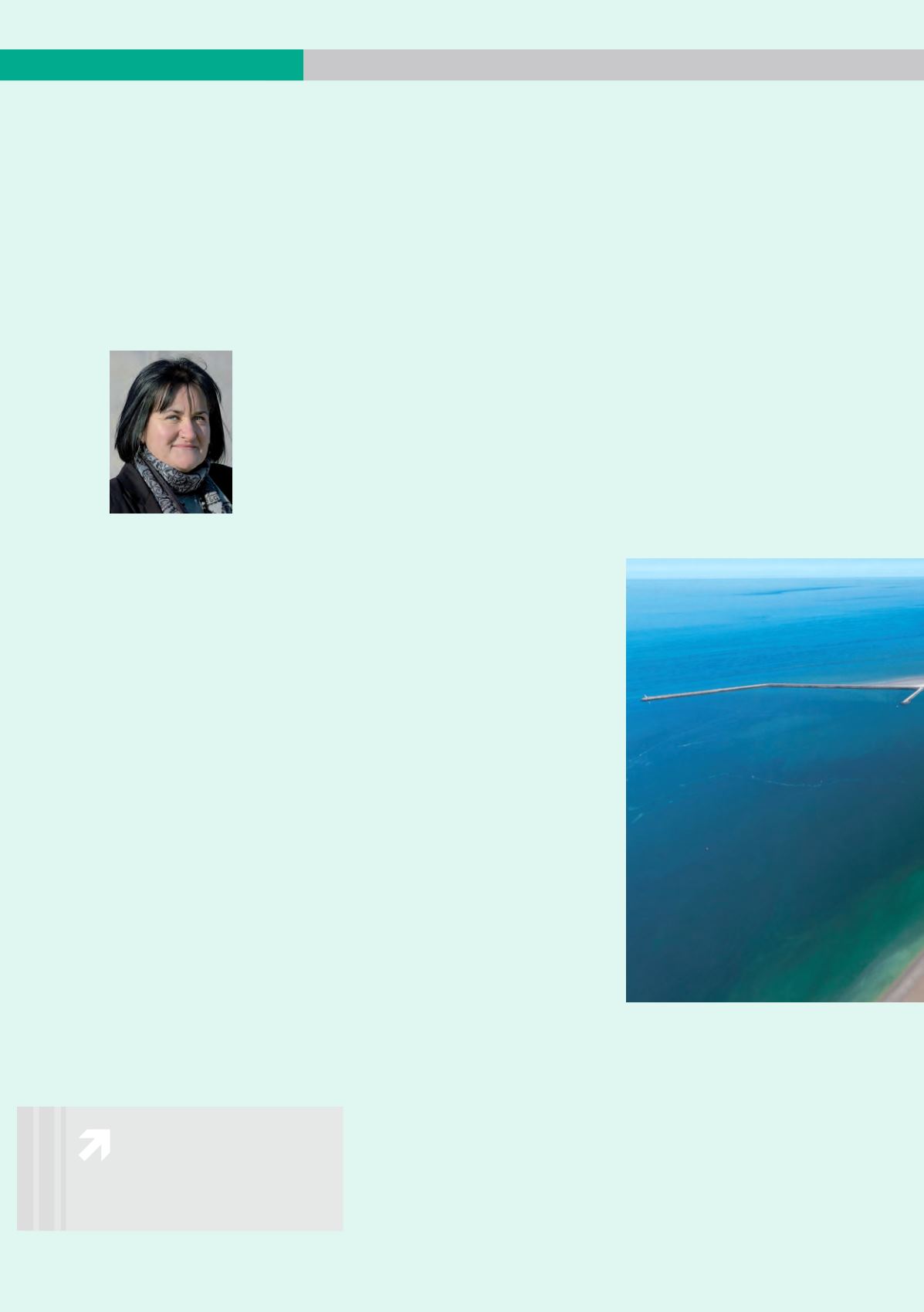
34
RUSSIA - FRANCE
C
ould you briefly describe the
activity of the terminal?
The Dunkirk LNG terminal is an
industrial site designed to supply to
its customers services for the stora-
ge and regasification of liquefied
natural gas (LNG) before it is injected
into the transport network according
to customer needs. LNG is natural
gas that is cooled to a temperature of
around minus 162 degrees Celsius to
make it liquid. Its volume is then six
hundred times smaller than in its
gaseous form, which makes it possi-
ble to transport it by ship from pro-
duction areas that are far from
consumption areas. The Dunkirk
LNG terminal has annual regasifica-
tion capacity of thirteen billion cubic
metres of gas, i.e. approximately
twenty percent of French and Belgian
consumption. Our terminal is also
the only one that is directly connec-
ted to two markets, the French and
Belgian ones. This enables Dunkirk
LNG customers to supply the
German market through Belgium.
Germany is currently facing a
gradual fall in its gas supplies.
How was this project developed?
It was the encounter of three major
industrial companies, EDF, Fluxys
and Total, which enabled the project
to develop. With more than thirty-five
years of expertise in LNG, Fluxys, a
Belgian energy operator, is actively
contributing to the development
of an integrated European transport
network that facilitates the circulation
and trading of natural gas. Gaz-
Opale, a fifty-one percent subsidiary
of Dunkirk LNG and a forty-nine
percent subsidiary of Fluxys, is the
operator of the facility. Among Gaz-
Opale’s fifty-eight staff members,
there are some that are seconded
from Fluxys, which is an expert in this
field due to its experience on the
Zeebrugge LNG terminal.
What are the technical features of this
industrial site?
From a technical point of view, the
Dunkirk LNG terminal has one of the
largest storage capacities in Europe
with its three LNG tanks, each of
which has a capacity of two hundred
thousand cubic metres. The site is
located on a fifty-six hectare platform
in the Port of Dunkirk and provides a
new seafront for the arrival of LNG in
France. It is equipped with a jetty that
enables the unloading and reloading
of the largest LNG carriers, which
have a capacity of two hundred and
sixty-seven thousand cubic metres
and which are known as Q-max
carriers.
Ten regasification units reheat the
LNG and transform it into natural gas
before it is sent through the transport
network. Thanks to a five-kilometre
submarine tunnel that links the
Gravelines nuclear power station and
the Dunkirk LNG terminal, five
percent of the warm water that is
discharged by the power station is
recovered to heat the LNG to trans-
form it into gas. This industrial
synergy leads to savings that are
The Dunkirk LNG terminal is located at the crossroads of the sea routes between
the Channel and the North Sea and close to the natural gas consumption markets
in North-West Europe. It is a real competitive tool and bolsters the security of natural
gas supply for France and Europe.
Béatrice PRUD’HOMME,
CEO of Dunkerque LNG
©DR
‘The Dunkirk LNG terminal
has one of
the largest storage
capacities in Europe’
• 5 years of construction
• 7,200 people worked on the
building site
• 11 million hours worked
• 1.2 billion euros invested
• Up to 170 LNG carriers a year


